John Carpenter’s Filmography Ranked From Worst To Best

I have come here to chew bubblegum and rank movies…and I’m all out of bubblegum!
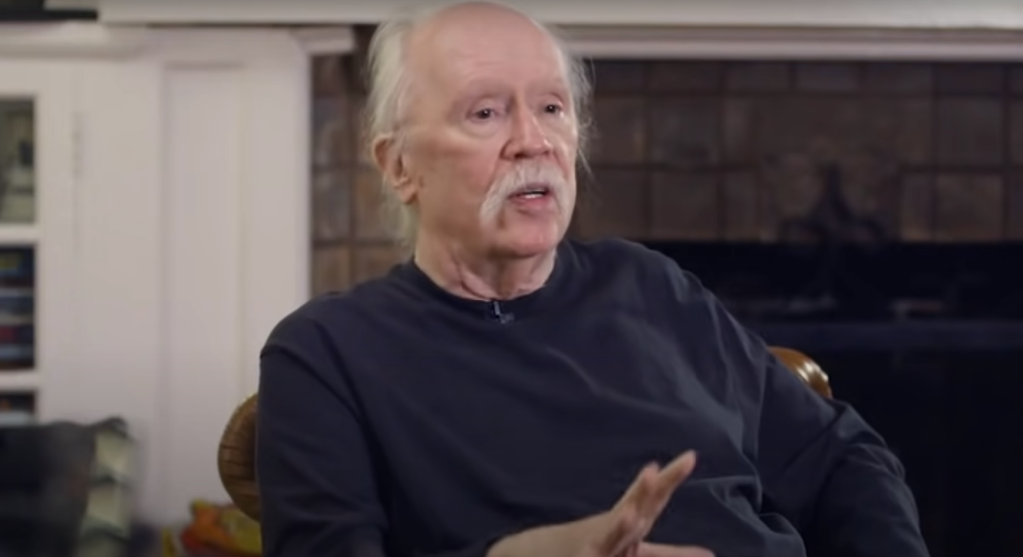
The 1970s and 1980s are unarguably the best decades for horror. It introduced viewers to a litany of incredible films, unforgettable characters, and talented directors. It ushered in a new age of practical effects that still hold up to this day.
If there’s one name that stands above the rest, it’s John Carpenter – the master of horror and his DIY approach to filmmaking. The man’s legacy is top-tier, but even some of his work might not stand the test of time, while others stand above the rest. Which ones? Find out as we rank all 18 of his feature films from worst to best.
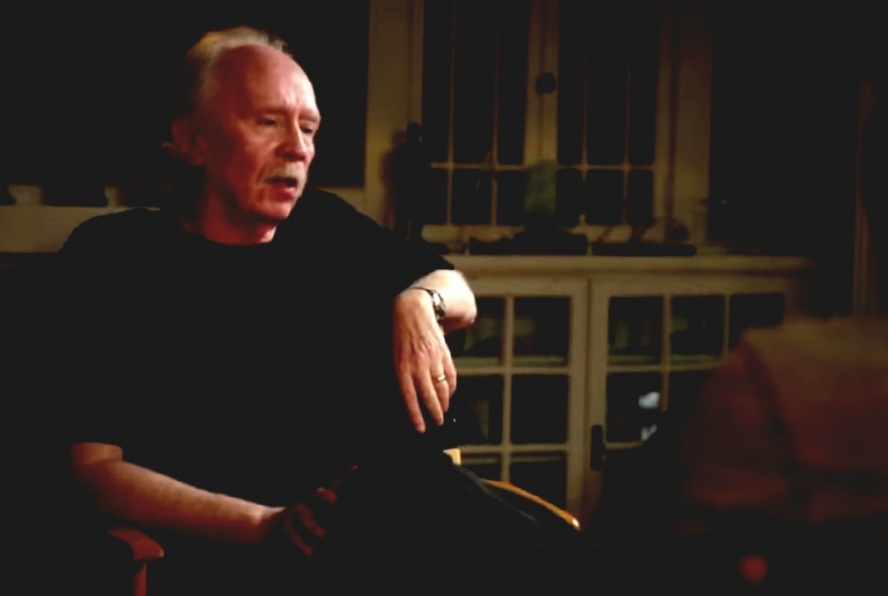
Note: Although they each deserve an honorable mention, this doesn’t include the three television films he directed – whether that’s Someone’s Watching Me! (1978), Elvis (1979), or Body Bags (1993). Sorry to everyone who has a special place in your black dead hearts for those. Now, put your sunglasses on.
18. The Ward (2010), ARC Entertainment / XLrator Media
The last John Carpenter film to be released is also the least memorable. Taking place in 1966 in rural Oregon, an amnesiac named Kristen (played by Amber Heard) is institutionalized after setting fire to a house for reasons that aren’t even explained until the end of the movie.
Kristen then meets a few other women when she enters the ward. All of which come with their own unique, and deliberately varying degrees of mental illnesses, personalities, acting abilities, and attractiveness.
A dark figure begins attacking the fire starter in the middle of the night, patients start dying, and the movie becomes something like a cross between Gothika (2003), Identity (also 2003), and Shutter Island (2010).
Despite the classic Carpenter atmosphere and camera shots, this movie has no passion, or spirit (also no pun intended). Mr. Carpenter applied his expertise towards the execution but seemed to phone in the rest.
If that’s not enough of a red flag for anyone, don’t forget that it stars Amber Heard (and some really bad hair extensions). The Ward is available to stream on TUBI if you dare.
17. Village of the Damned (1995), Universal Pictures
The only reason this isn’t last is because it’s at least somewhat amusing. This is a remake of a 1960 film of the same name in which an alien force puts a quiet California town to sleep for several hours before everyone regains consciousness.
Afterward, ten of the women discover that they’re pregnant from the phenomena (one of whom is actually a virgin), and they all give birth on the same night.
The creepy half-alien babies turn into creepy intelligent half-alien children with blonde hair, glowing eyes, a very hive-minded mentality, and telekinetic abilities.
Sounds like something that might be kinda cool, right? Wrong. The film is campy, but not in a good way. Christopher Reeve does his best, and it’s always good to see him in anything, but even the Man Of Steel wasn’t enough to help the film stand on its own.
Village of the Damned is like a good 50s movie that’s only bad because it came out in the 90s – like the Tim Burton film Mars Attacks! (1996), but even worse. Village is available to rent on Prime Video
16. Ghosts of Mars (2001), Sony Pictures Releasing/Screen Gems
This deserves to be even lower on the list, but unfortunately, the previous two films exist. John Carpenter returns to the 22nd century in this cross between horror, science fiction, action, and Westerns.
It takes place on a colonized Mars, and Natasha Henstridge plays a cop who leads her squad, along with a gang of convicted criminals, against an army of local miners who are possessed by the vengeful spirits of native Martians.
The acting is terrible, the dialogue cheesy, and there is no plot to find within the multitude of flashback sequences. Ice Cube drones through every line as though he’s fully aware of the film’s quality, and wants it to be over just as bad as we do.
The great Pam Grier is greatly misused in a supporting role, and to make it worse her death was offscreen. Otherwise, it’s exactly what Mr. Carpenter intended it to be, a mindless action film.
It received negative reviews from most critics upon release but has since reached cult status among fans with most praise directed at the film’s action and music. Ghosts of Mars is another you can rent on Prime Video.
15. Memoirs of an Invisible Man (1992), Warner Bros.
Loosely based on a 1987 novel of the same name, Memoirs of an Invisible Man about a stock analyst (played by Chevy Chase) who turns invisible during an accidental laboratory meltdown. From there, he goes from trying to cure himself to enlisting the assistance of a way-too-easygoing new love interest (played by Daryl Hannah) to help him get rich trading stocks.
All this goes down while being pursued by a sinister CIA operative (played competently by Sam Neill). This film’s big problem is it struggles to decide whether it’s a thriller, action film, drama, or comedy without ever fully establishing itself in any of those genres.
Memoirs of an Invisible Man was a box-office bomb, the critics hated it, and it’s one of the rare Carpenter films to not have a cult following. It’s not hard to see why. Aside from a couple of funny moments, the film is a mess with a plot so thin that it’s see-through.
It’s hard to tell whether Chevy Chase was a miscast, or if he just brought the wrong kind of energy to the role. Remove all thoughts of John Carpenter being involved, and the film comes off as an over-the-top Fletch sequel that should have never seen the inside of a movie theater or TUBI for that matter.
14. Dark Star (1974), Bryanston Distributing Company
John Carpenter’s debut film is a science fiction yarn (co-written by him and Dan O’Bannon) that’s set in the middle of the 22nd century. The film began as a student project at the University of Southern California and was eventually made into a feature-length feature with the help of Filmex two years later.
It focuses on the crew aboard a spaceship named Dark Star. Both are deteriorating after twenty years into a mission to destroy unstable planets that threaten the colonization of habitable ones nearby.
The ship’s equipment is malfunctioning, there are work-related fatalities, and the remaining crew have been driven “around the bend” by their tedious work. They distract themselves to stay sane, all while dealing with constant mechanical errors threatening to permanently end their mission.
This film is far from a masterpiece (even if Quentin Tarantino disagrees), but it’s not without charm. The effects may come off as cheesy through the eyes of modern moviegoers, and that is understandable.
It takes a certain amount of disbelief suspension to watch a man being attacked by a beach ball in an elevator shaft, or multiple scenes where two AI systems argue with each other, but it’s still impressive for a film with only a $60,000 budget.
It was disliked by critics, and ignored by audiences when it was first released, but would eventually find cult status on the video market (like almost every John Carpenter movie), along with heavily influencing future Sci-Fi classics.
It was the first film to depict a ship jumping into hyperspace, and George Lucas would use the same effects five years later in Star Wars.
Dark Star was also the inspiration for ‘Dave Hollins: Space Cadet,’ the radio sketches that would eventually turn into the brilliant science fiction/comedy sitcom Red Dwarf. It’s quirky, eccentric, and a must-watch for diehard fans who can stream it on TUBI pronto.
13. Escape from L.A. (1996), Paramount Pictures
Kurt Russell is back as Snake Plissken in this sequel to the 1981 classic. The year is 2013, and Los Angeles has been turned into a prison after a cataclysmic earthquake.
This time around the US President (played by Cliff Robertson) forces Snake to recover a device that was stolen by his daughter, and it can knock out electricity across the entire planet.
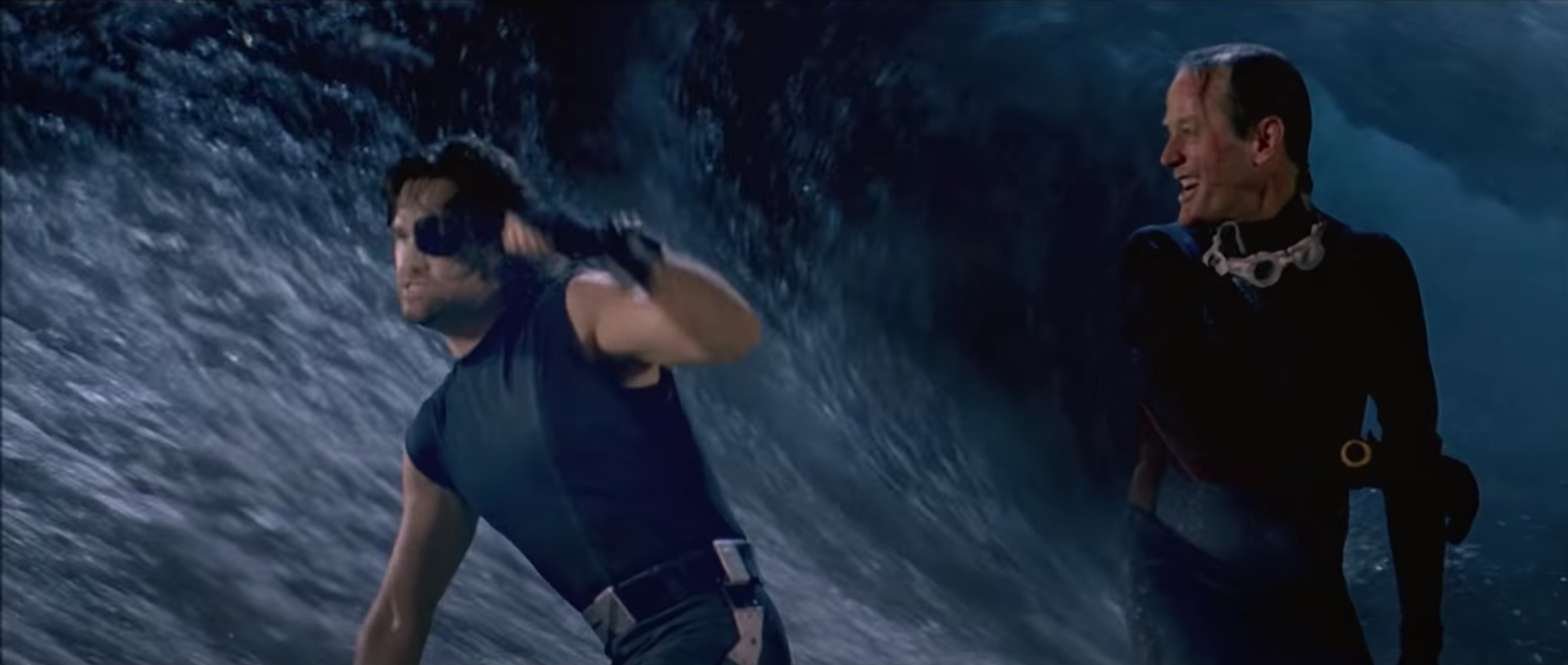
It’s unclear how the First Daughter (played by AJ Langer from The People Under the Stairs) was able to gain access to it, but she nonetheless takes it to her incarcerated revolutionary boyfriend (played by Georges Corraface, and not Carface) in LA, and Snake must get it back before his time is up.
It is meant to satirize apocalyptic action films, but it also tries to take itself seriously, resulting in an incoherent plot, cartoonish action, and a very cringe-worthy surfing sequence involving Peter Fonda.
Escape From L.A. received mixed reviews when it was released, but Carpenter still insists that it’s superior to the first film. Over the years, it has gained a following, and time has been a little bit kinder, but it still falls short of its predecessor. Sorry, John… We’ll always have MAX.
12. Starman (1984), Columbia Pictures
After showing audiences one of the most malevolent aliens in cinematic history two years prior, Carpenter introduced the complete opposite. Starman is about an incorporeal being that comes to Earth after coming across the space probe Voyager 2 and accepting the invitation found on one of the gold phonograph records.
Its ship is shot down by the military when it arrives and crashes in Northern Wisconsin, and it comes across the home of a spiraling widow named Jenny. It clones the body of her recently deceased husband after finding a lock of his hair then uses it as a vessel, while she watches in terror.
At first, Jenny isn’t a very willing participant which results in the start of their journey being a kidnapping. He sets up a rendezvous with his home planet and informs her that if he doesn’t get to Arizona in three days he’ll die. Instead of going insane, she decides to help him, and they fall in love during their journey.
It received positive reviews from critics but wasn’t successful at the box office. Though a unique film, it was very out of character for Carpenter.
The set-up had the potential to be a more familiar shade of bleak. A grieving woman who is on the brink meets a childishly helpless alien who’s wearing the borrowed body of her dead husband. That could’ve gone in some messed up directions.
Starman is a decent enough date film (assuming you’re even able to get one), and Jeff Bridges crushed his role as the alien, but it could’ve been so much more. Judge for yourself on Prime Video.
11. Vampires (1998), Sony Pictures Releasing/Columbia Pictures
James Woods stars in this neo-western/action/horror film that is also based on the 1990 novel Vampire$ by John Steakley. He leads a team of Catholic-funded vampire slayers who roam the lands, and hunt nests of the undead in some brutally awesome ways with wooden stakes, guns, and a crossbow which is used to drag them out into the sunlight.
They encounter one of the nest’s masters, and his plan to obtain an ancient crucifix that will grant him invincibility. As far as the story goes, there isn’t much there, and none of the characters are good people, but that doesn’t matter. The film is a well-made celebration of B-movies and gore.
At a time when vampires were all brooding sacks of blood tears weeping their way through dull ‘immortality’ (because of the goth aesthetic), this film portrayed them as savage creatures that didn’t mind getting blood all over their fancy Victorian frock coats.
Great execution (especially the cinematography), solid acting (especially Woods), and just enough dark humor without getting too campy, Vampires polarized critics when it was released with some enjoying the ultraviolent fun while others rebuked the film’s lack of a plot.
Like most of Carpenter’s films from that decade, he was more interested in mindless entertainment than anything else. This one was his best attempt, in that regard. Watch it on Netflix if you’re thirsty.
10. Christine (1983), Columbia Pictures
The early 80s were a magical time for horror, and this film combined two people at the height of their creative talent. Carpenter had just completed The Thing the previous year, and horror writer Stephen King was in such high demand in Hollywood that he could’ve had a film adapted from his grocery list.
But instead of doing that, Columbia Pictures chose to adapt his novel of the same name, and the film was released a mere 224 days after the book was first published.
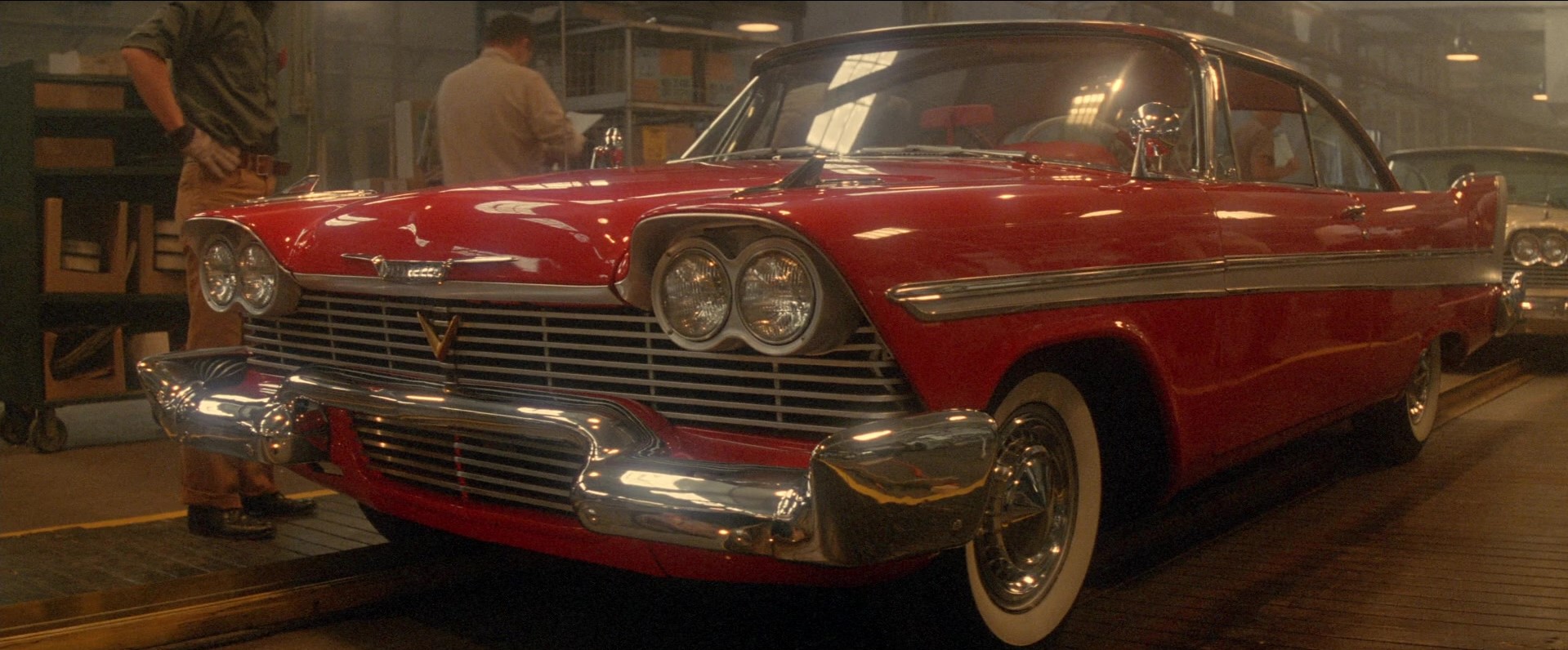
Taking place in the year 1978, a bullied California nerd named Arnold “Arnie” Cunningham (played by Keith Gordon) comes across a crumbling 1958 Plymouth Fury sitting in the front yard of a run-down house, and the owner tells him that the name of the car is “Christine”.
Completely smitten, Arnie buys it for cheap and restores the classic car to its former beauty all on his own. But as the car changes, so does he. Christine slowly starts coming to life, deciding to show her gratitude by murdering Arnie’s bullies.
It was well-received by critics and a box-office success. While it’s not the best work by both men, it’s not the worst either. Carpenter may not have put his entire heart into making the film, which he considered just a job, but enough of his spirit is still there.
You can stream Christine on AMC+ right now so take the ride.
9. Prince of Darkness (1987), Universal Pictures / Carolco
The second entry in John Carpenter’s ‘Apocalypse Trilogy’ takes place at a Catholic monastery in Los Angeles owned by the mysterious Brotherhood of Sleep.
The head of the ancient order who communicate through their dreams (played by the late/great Donald Pleasence) invites a quantum physicist professor (played by Victor Wong), and his students to join him in the basement of the monastery to assist him in investigating a cylinder that’s filled a swirling green liquid.
They decipher the texts etched upon the ancient cylinder and learn the terrifying secret of the ooze. It contains the corporeal embodiment of the devil who is the offspring of an even more powerful “Anti-God” entity that exists in the realm of anti-matter.
A mass of schizophrenic homeless people (led by rock legend Alice Cooper) surround the building to prevent anyone from escaping while the Prince of Darkness possesses the inhabitants and tries to free his father from the other dimension and bring him to Earth.
It did well at the box office and gained a cult following over the years. Carpenter’s mastery of atmospheric tension is on full display here along with an oppressive musical score to increase the dread.
This film is not perfect (not giving Alice Cooper any speaking lines was an act of pure, dripping evil), but it’s still a fun watch that will have your mind pondering bleak thoughts of the unknowns beyond humanity’s reckoning.
You can summon this one to rent on Prime Video.
8. In the Mouth of Madness (1994), New Line Cinema
Next is the final installment of his trilogy, and one of the most underrated horror films of the 90s. The ever-competent Sam Neil returns to Carpentersville as insurance investigator John Trent.
He is hired by a publishing company to track the whereabouts of their client, popular horror author Sutter Cane (played by Jürgen Prochnow). The deadline for his new novel is approaching, and it’s expected to outsell all previous bestsellers, but they have neither manuscript nor scribe.
There’s also a rumor going around that some readers are going insane after finishing Cane’s stories – something which is given legitimacy when Cane’s former agent tries to murder Trent with an axe during the meeting before being shot dead by police.
Always the skeptic, John dismisses the whole thing as a publicity stunt and sets out for the town of Hobbs End to find the hoaxer wordsmith. But when he gets there, John’s skepticism turns on itself. He begins to question reality and his own sanity before discovering the terrifying truth.
Like the other two films in the trilogy, this one gives a salute to Lovecraftian Horror and its varying shades of bleakness. It was a box-office failure, and critics gave it mixed reviews, but that’s not surprising. In the past, a lot of critics didn’t like horror, least of all horror movies that made them think.

In The Mouth of Madness is original, well-made, well-acted, and Carpenter’s best film from that decade. Do you read Sutter Cane? No problem, just rent it on Prime Video.
7. Assault on Precinct 13 (1976), Turtle Releasing Organization
John Carpenter’s sophomore effort is a bloody urban western about four paths converging at a South Central Los Angeles police precinct that is about to be decommissioned. Newly promoted Lieutenant Ethan Bishop (played by Austin Stoker) is put in charge of the precinct, and its skeleton crew on the last night before the doors are closed forever.
The local gang has also started a war with the police after six of its members were gunned down. Things escalate when a man exacts revenge on one of the gang members after his young daughter is shot and killed in broad daylight.
Meanwhile, a group of prisoners are being transferred, including a convicted murderer named Napoleon Wilson (played by Darwin Johnston) along with two other inmates. One of them falls ill and the prison transfer bus stops at the precinct to seek medical attention.
The vigilante father is then chased into the precinct by vengeful gang members, and that’s when the assault begins.
The film didn’t do too well at the box office and was met with mixed reviews (shocker). It would eventually be reappraised and is now regarded as one of the most influential action films of all time. This exploitation masterwork set the rules for great films to follow. It’s a slow build-up, but worth every second. Find it on TUBI.
6. They Live (1988), Universal Pictures / Carolco Pictures
Some dub this film a cult classic, while others claim it to just be a cheesy B movie, but some call They Live a documentary. It is based on Ray Nelson’s 1963 short story ‘Eight O’Clock in the Morning’ and stars wrestling legend ‘Rowdy’ Roddy Piper as a nameless drifter searching for work in an economically crumbling Los Angeles.
Hot Rod (playing a guy simply known as “Nada”) comes across a group that’s hiding out in an abandoned church on Skid Row and finds out that they are a government resistance militia who have figured out a horrifying secret – aliens run the world, and control the minds of the masses through subliminal messages.
A box of sunglasses breaks the programming and shows him what the world truly looks like.
Everything is black and white (how binary) and every magazine and billboard carries a message encouraging humans to sleep, consume, conform, procreate, obey authority, and worship money.
The glasses also show the aliens – hideous, bug-eyed humanoids with flayed faces, and bad wigs – hiding among the population. There is no established time period, but it seems to be set in a not-too-distant dystopian future, or perhaps it’s a contemporary cynical view of the 80s obsession with mass consumerism.
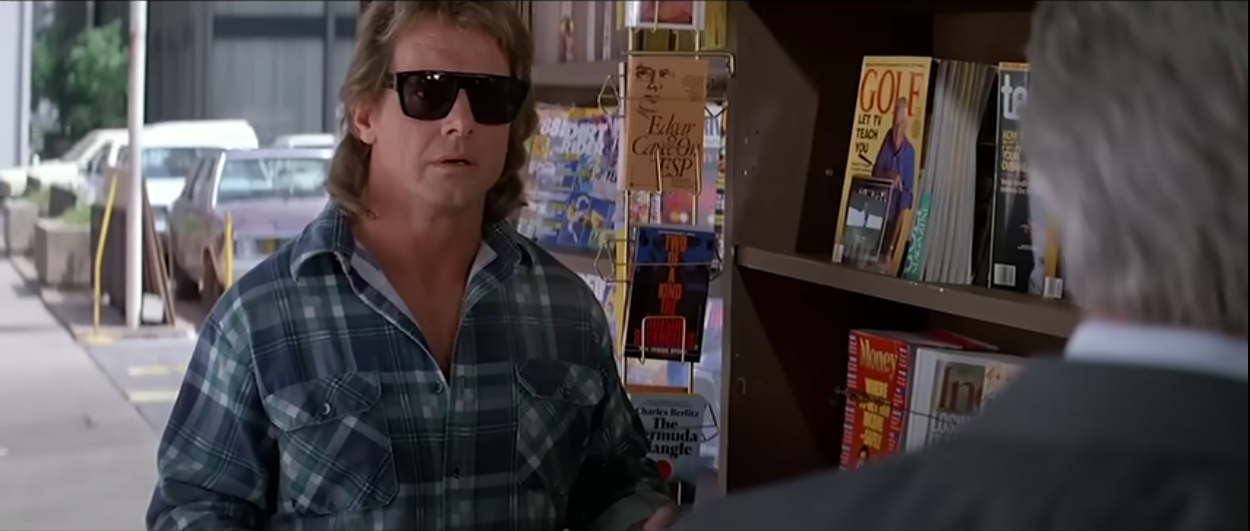
It did well but critics gotta critic. It’s not the best-written film, and that three-note music score gets annoying halfway through, but it’s still a brilliant concept. One that sadly has more truth to it than fiction.
They Live would go on to become celebrated, and is forever cemented within the annals of pop culture history. It also contains the greatest bare-knuckled street ever recorded between Piper, and fellow legend Keith David. Today, they live on Prime Video.
5. Big Trouble in Little China (1986), 20th Century Fox
John Carpenter reunites with Kurt Russell in this comically dark action fantasy that takes place in San Francisco’s Chinatown (and for once not Los Angeles).
Restaurant owner, Wang Chi (played by Dennis Dun) enlists the help of Jack Burton, a wise-cracking truck driver, to rescue his green-eyed girlfriend from an ancient sorcerer (played by James Hong) who needs her to lift a 2000-year-old curse and grant him the power to rule the universe from beyond the grave.
The story sounds like something out of a comic book, and the style of the film is no different. It’s a wonderful medley of over-the-top fight scenes, all the great kung-fu cliches, amazing set designs, spectacular special effects that only big studio budgets could buy, and a giant hairy monster that looks like somebody threw acid in Chewbacca’s face.
Big Trouble in Little China was a box-office failure despite being well-received, but the film exploded when it hit VHS. In the age of streaming, it remains a timeless 80s gem that can be watched repeatedly – especially on AMC+
4. The Fog (1980), AVCO Embassy Pictures
In the place where many fans would’ve listed the previous film, there’s this one instead. It’s a mellow ghost story about an ominous glowing fog that drifts into a small town in Northern California, accompanied by the murderous spirits of vengeful leprous mariners.
The Fog divided critics but it was still a box-office success and is one of John Carpenter’s highest-grossing films.
It also shows him at the top of his game through the film’s atmosphere, rhythm, cinematography, and let’s not forget the eerie score. The pacing is slow, but effective, just like a burning campfire in the dead of night.
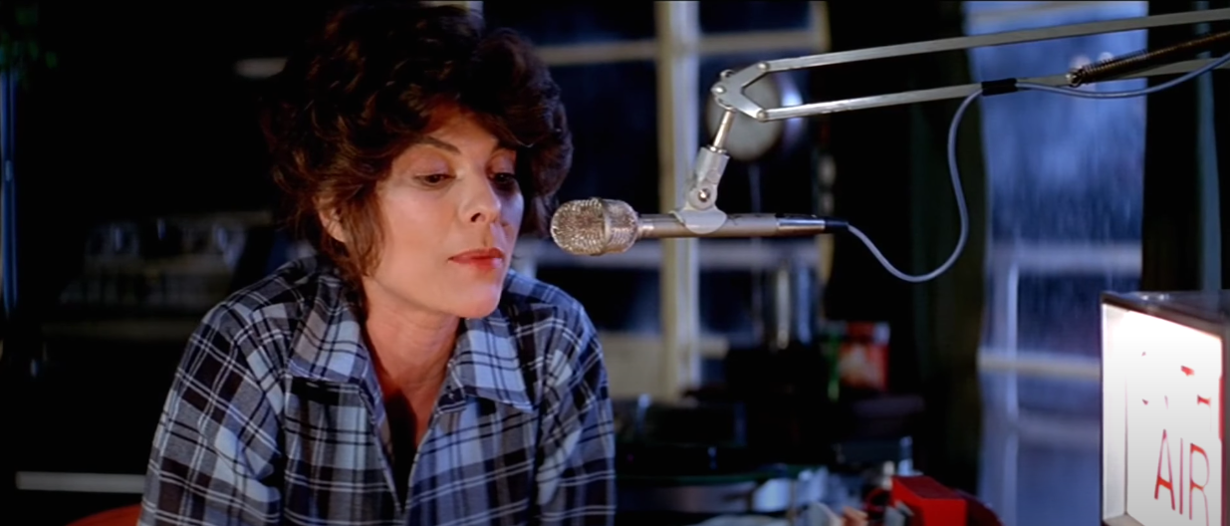
Halloween’s Jamie Lee Curtis returns with fresh screams, but at least she doesn’t have to babysit anyone this time. Horror’s original tough guy Tom Atkins brings his snarky, blue-collared charm to the role of Nick Castle, despite not having his trademark mustache.
There are ghost stories within this ghost story that keep viewers hunched forward with their chin in their hands. It’s a tribute to American folklore, and the classic stories of EC Comics (Tales From the Crypt, Vault Of Horror, etc.) without going overboard with camp.

Adrienne Barbeau ties off the ending with one of the greatest closing monologues in horror film history while Carpenter’s trusty synthesizer sets the blood-chilling tone. For a director with such a large collection of vastly underrated films, this ‘minor horror classic’ remains one of his best.
3. Escape from New York (1981), AVCO Embassy Pictures
We finally escape the insufferably sunny depths of California and arrive at the dystopian future of…1997?
America has become a cesspool of crime, and violence so the government walls off the island of New York City, and converts it into a maximum-security prison. The President (played by Donald Pleasence) is on his way to an important summit to prevent WW3 when Air Force One is brought down inside the walls of the city-wide penitentiary.
After an unsuccessful rescue attempt, they cut a deal with a soon-to-be inmate. Special Forces Lieutenant S.D. “Snake” Plissken (played by Kurt Russell) faces permanent New York citizenship after attempting to rob the Federal Reserve but is offered a pardon for rescuing President Pleasance, and retrieving an important McGuffin that the commander-in-chief is carrying.
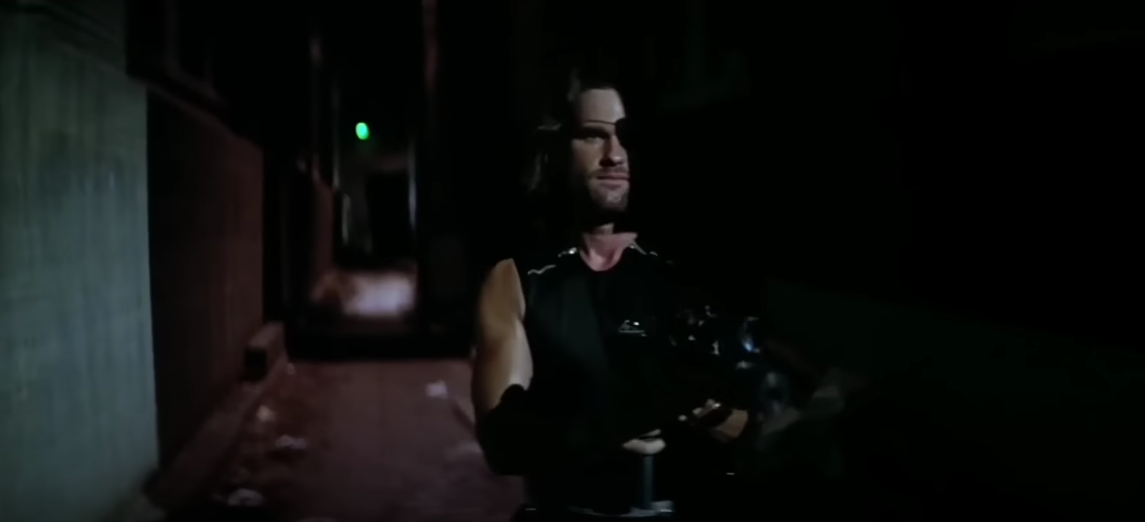
All of this he must do within 24 hours. Otherwise, the mission is terminated…and so is Snake.
This sets up one of the greatest action films ever made. It introduced an iconic cinematic anti-hero who trudges through the grimy perdition of urban decay – forced into conflict when all he wants is to be left alone.
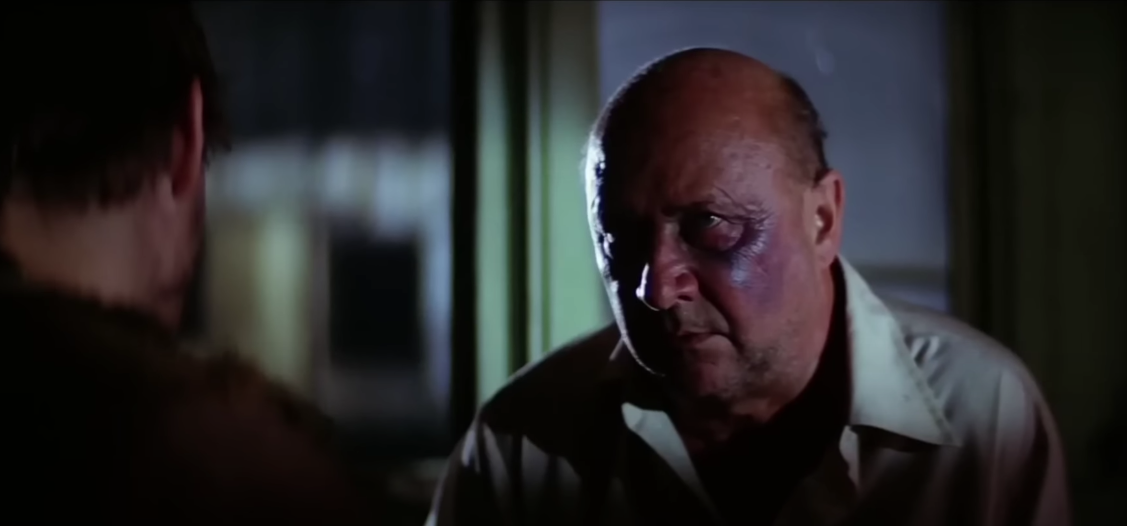
A commercial and critical success, it remains a beloved favorite of Carpenter fans who want to indulge in the genre on Prime Video and elsewhere.
2. Halloween (1978), Compass International Pictures / Aquarius Releasing
The slasher genre was born here. Fifteen years after murdering his sister, knife-wielding maniac Michael Myers (played by the masked Nick Castle, and unmasked Tony Moran) escapes the incarceration of a sanitarium and returns home to Haddonfield on Halloween.
His psychiatrist, Dr. Samuel Loomis (played by Donald Pleasence), follows behind and tries to warn the authorities of the evil that is loose in their town. Jamie Lee Curtis makes her feature film debut as Laurie Strode – the original ‘final girl’ with a great set of windpipes, and potentially a small fortune stashed away from babysitting so much.
It received critical acclaim and is considered one of the most influential horror films of all time. This is what put John Carpenter on the map, and it was the most profitable independent film until the highly-overrated The Blair Witch Project came along in 1999.
Halloween spawned an endless body count of imitators, along with a multitude of inferior sequels, but none could reach the same expert level of filmmaking. From the brilliant camera angles, panoramic shots, and one can never forget the legendary piano score by John Carpenter.

The film is an immortal classic, and a must-watch every October. Trick or treat around AMC+ this year and you might find it.
1. The Thing (1982), Universal Pictures
Antarctica 1982: This is the setting for John Carpenter’s Sci-Fi/Horror masterpiece.
An American research team (led by JC regular Kurt Russell) confronts a hostile extraterrestrial organism that consumes its victims before perfectly imitating them. It is an invader that would wipe out all of humanity if it ever reached a populated area.
As a winter storm rolls over the Arctic outpost, the team (with great performances by Keith David, and Wilford Brimley) is overcome by paranoia and tensions escalate as they quickly learn to distrust each other.
There’s no telling who is The Thing or how many are still human in the ultimate tale of isolation, helplessness, and alien terror.
At a time when moviegoers were having their heartstrings pulled by friendly aliens, like E.T. (which came out only two weeks prior), nobody seemed to be ready for such a harsh take on them.
Critics panned the film for its nihilism, bleakness, graphic violence, and everything else that makes it amazing. It wasn’t a failure at the box office, but not a blockbuster either. Like most of the films on this list, it found life on the home video market.
It has since been reappraised and is now considered by many to be one of the greatest horror films ever made. The heavily criticized gore is now praised for its groundbreaking special effects.
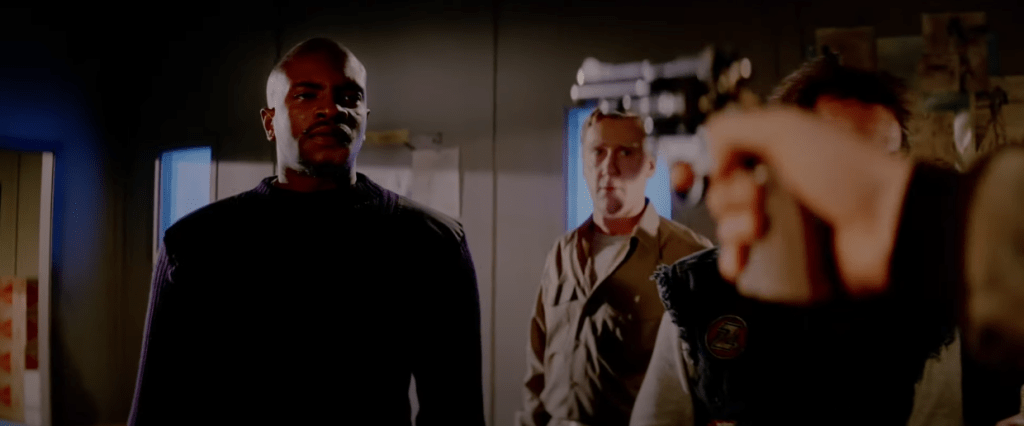
This is the first entry in Carpenter’s ‘Apocalypse Trilogy’ which draws heavily from the works of HP Lovecraft. People are being confronted by entities beyond their comprehension forcing them to examine humanity’s place in a cold and indifferent universe.
The Thing does a perfect job of capturing that essence.
A remake of the 1951 classic The Thing From Another World, both of which are based on the 1938 novella ‘Who Goes There?’ by John W. Campbell. This is one of the rare occasions where a remake surpasses the original film, and it’s John Carpenter’s finest hour.
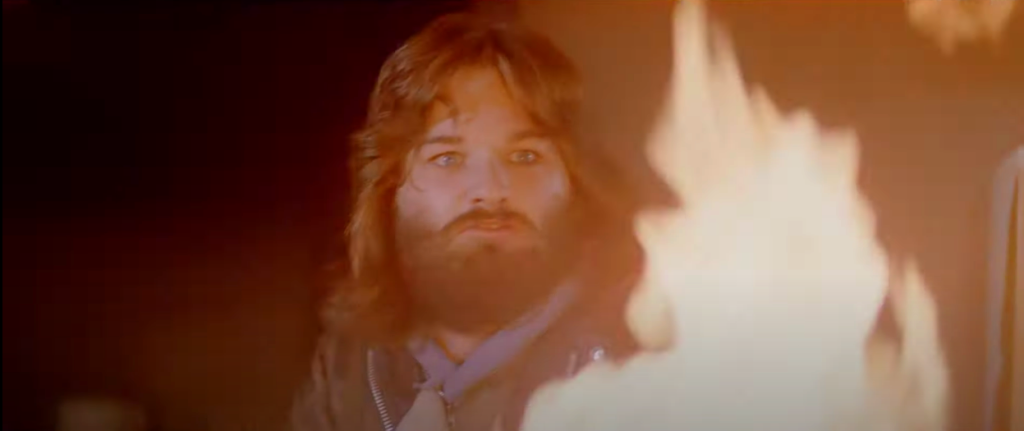
More About:Movies
